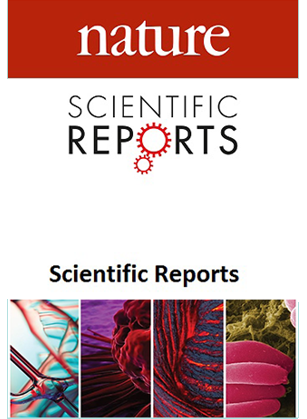基于MIMIC-IV数据的危重缺血性脑卒中患者血清乳酸与死亡率的关系
摘要
中风是一种急性脑血管疾病,是由于脑血管突然阻塞或破裂而引起脑组织损伤的结果。缺血性中风是中风的一种特殊类型,导致残疾甚至死亡的中风病例占中风病例的三分之二,严重影响患者的生活质量。乳酸是各种生理和病理过程中不可缺少的物质,已被用于预测败血症、心力衰竭和急性呼吸衰竭的预后。尽管先前的研究已经评估了单个时间点血清乳酸的预后价值,但动态乳酸轨迹对缺血性卒中患者全因死亡率的预测潜力仍不清楚。因此,本研究旨在阐明缺血性脑卒中患者血清乳酸浓度轨迹与全因死亡率之间的关系。从MIMIC-IV数据库收集信息,包括在ICU住院的最初7天内进行至少两次血清乳酸计数评估的患者。采用基于群的轨迹建模(GBTM)技术,确定独特的乳酸计数路径。根据患者在特定时间内血清乳酸水平的波动,将患者分为不同的轨迹类别。为了评估血清乳酸浓度与死亡风险之间的联系,利用Kaplan-Meier曲线和Cox比例风险回归模型进行了生存研究。此外,我们分析了临床特征和住院时间,以确定患者结果和资源使用的可能差异。该研究包括752例患者,其中确定了血清乳酸计数的两种不同轨迹:1级,其特征是“血清乳酸计数急剧下降”,2级,其特征是“血清乳酸计数更缓慢但持续下降”。进一步观察临床特征差异发现,2级患者的临床评价指标得分高于1级患者(SOFA、APS III、SAPS II和OASIS),死亡率也高于1级患者。随后的Kaplan-Meier分析显示,第1类在28和90天的生存曲线趋势优于第2类(p值均小于0.05)。此外,单变量和多变量Cox回归进一步分析证实,在医院和ICU环境中,第2类患者在28天和90天的死亡风险均高于第1类患者(风险比范围为1.41 ~ 3.37,p值均小于0.05)。最后,亚组分析确定了几个显著影响轨迹分类和相关风险的因素,包括年龄、性别、是否存在合并症(如糖尿病)、较高的GCS评分和较高的BMI值。本研究强调了缺血性脑卒中患者血清乳酸浓度轨迹的预后意义。血清乳酸浓度持续下降与死亡风险增加有关。此外,亚组分析表明,男性、老年人、超重或肥胖人群以及糖尿病患者是特别值得注意的亚组。早期识别这些临床特征可能有助于加强风险分层,并为有针对性的治疗干预提供基础。未来的研究应该探索潜在的机制途径。



Stroke, as an acute cerebrovascular disease, results from brain tissue damage caused by the sudden blockage or rupture of cerebral blood vessels. Ischemic stroke, a specific type of stroke, accounts for two-thirds of stroke cases leading to disability or even death, significantly impacting patients' quality of life. Lactate, an indispensable substance in various physiological and pathological processes, has been utilized in predicting the prognosis of sepsis, heart failure, and acute respiratory failure. Although previous studies have evaluated the prognostic value of serum lactate at single time points, the predictive potential of dynamic lactate trajectories for all-cause mortality in patients with ischemic stroke remains unclear. Therefore, this study aims to elucidate the correlation between serum lactate concentration trajectories and all-cause mortality in patients with ischemic stroke. Information was gathered from the MIMIC-IV database, encompassing patients who had undergone a minimum of two serum lactate count assessments in the initial 7 days of ICU stay. The technique of group-based trajectory modeling (GBTM) was employed to pinpoint unique lactate counting paths. Patient classification into different trajectory categories was based on the fluctuations in their serum lactate levels throughout a specific duration. For assessing the link between serum lactate concentrations and the risk of death, survival studies were performed utilizing Kaplan-Meier curves and Cox proportional-hazards regression models. Additionally, we analyzed clinical features and the duration of hospital stays among groups defined by their trajectories to pinpoint possible variances in patient results and resource usage. The study included a cohort of 752 patients, within which two distinct trajectories of serum lactate count were identified: Class 1, characterized by an "steeper reduction of serum lactate count," and Class 2, characterized by a "more gradual but consistent decrease of serum lactate count." Further observation of clinical feature differences revealed that Class 2 had higher clinical evaluation index scores compared to Class 1 (SOFA, APS III, SAPS II and OASIS), and also exhibited a higher mortality rate. Subsequent Kaplan-Meier analysis demonstrated that Class 1 showed a better survival curve trend compared to Class 2 at both 28 and 90 days (all p-values less than 0.05). Additionally, further analysis using single-variable and multiple-variable Cox regression confirmed that the risk of death for Class 2 was higher than that of Class 1 at both 28 and 90 days, both in the hospital and ICU settings (hazard ratio ranges from 1.41 to 3.37, with all p-values less than 0.05). Finally, subgroup analysis identified several factors that significantly influenced trajectory classification and associated risks, including age, gender, presence of comorbidities such as diabetes, higher GCS scores and higher BMI values. This study highlights the prognostic significance of serum lactate concentration trajectories in patients with ischemic stroke. A consistent decreasing trajectory of serum lactate concentration is associated with an increased risk of mortality. Furthermore, subgroup analysis suggests that males, elder individuals, overweight or obesity people and those with diabetes are particularly noteworthy subgroups. Early identification of these clinical characteristics may aid in enhancing risk stratification and provide a basis for targeted therapeutic interventions. Future research should explore the underlying mechanistic pathways.

 求助内容:
求助内容: 应助结果提醒方式:
应助结果提醒方式:


